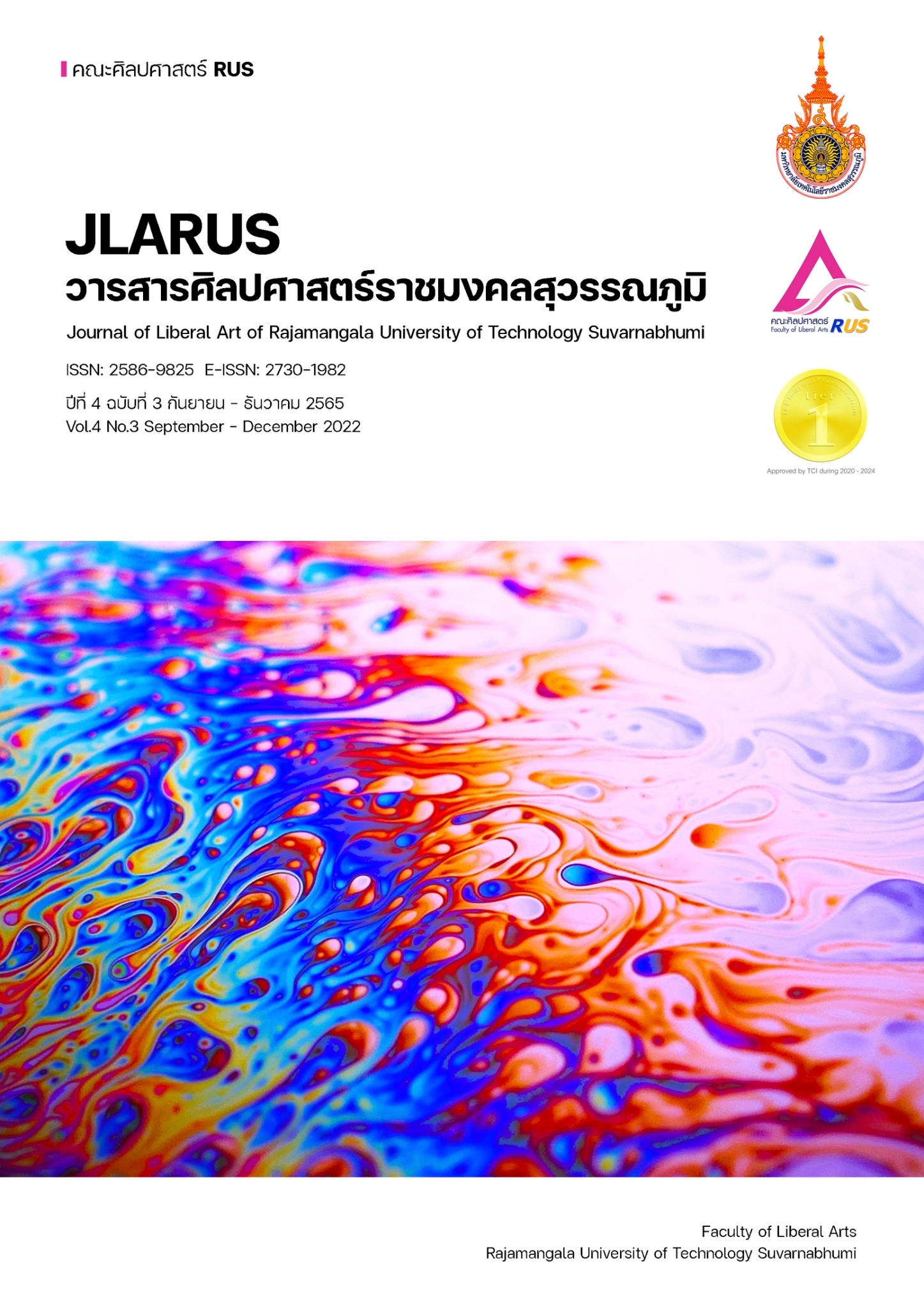THE LINKAGE OF AIR TRANSPORT MANAGEMENT AND TOURISM DESTINATION DEVELOPMENT
Main Article Content
Abstract
This research aimed to examine and analyze the extent to which the prospective drivers of air transport influence the development of tourism destinations.The determinants of air transport that affect tourism destination development include a preference for the size of the aircraft, a choice for the location of the airport, and a preference frequency of the flights. The literature review of tourism demand based on the consumer behavior theory was conducted to support how tourists are affected by the air transport they use to reach a destination. The self-administered online survey was conducted through convenience sampling of 200 Thai tourists in Thailand who had experience traveling overseas. The data were examined using regression analysis and hypothesis testing. The regression analysis found that aircraft size (t = 2.1439, p = 0.0427), location of the airport (t = 1.7330, p = 0.0361), and frequency of the flight (t = 1.5339, p = 0.0403) have a significant influence on tourism destination development. The findings revealed a positive relationship between preference for aircraft size, which had predictive power over the airport’s location, and appreciation for the frequency of the flights. However, the development of tourism destinations was also influenced by the location of the airport and the frequency of the flights. Discussion and conclusions are presented, and the recommendations for future research are to increase the sample size for higher reliability of the sampled representatives and to consider more variables using quantitative analysis. This study employed quantitative research; therefore, further qualitative studies, such as interviews and focus groups, are recommended.
Article Details

This work is licensed under a Creative Commons Attribution-NonCommercial-NoDerivatives 4.0 International License.
References
Dobruszkes, F. (2013). The geography of European low-cost airline networks: A contemporary analysis. Journal of Transport Geography, 28, 75–88.
Duval, D. T., & Schiff, A. (2011). Effect of air services availability on international visitors to New Zealand. Journal of Air Transport Management, 17(3), 175–180.
Fávero, L. P., & Belfiore, P. (2019). Binary and Multinomial Logistic Regression Models. In Data Science for Business and Decision Making. Retrieved on 30 September 2022, from https://doi.org/10.1016/b978-0-12-811216-8.00014-8
Graham, A., & Dennis, N. (2010). The impact of low-cost airline operations on Malta. Journal of Air Transport Management, 16(3), 127–136.
Goeldner, C., & Ritchie, J. (2012). Tourism Principles, Practices and Philosophies. (12th ed.). Wiley Press.
Hasanzadeh, S., Jafarabadi, M.A., & Sadeghi-Bazargani, H. (2019). Validity and Reliability of the Attention-deficit/hyperactivity disorder (ADHD) in Epidemiological Studies: Partial Least Squares-Based Confirmatory Factor Analysis. Journal of Injury and Violence Research, 11(4 Suppl 2).
Leighton, K., Kardong-Edgren, S., Schneidereith, T., & Foisy-Doll, C. (2021). Using social media and snowball sampling as an alternative recruitment strategy for research. Clinical simulation in nursing, 55, 37-42.
Limna, P., Siripipatthanakul, S., Woodeson, K., Chuaykam, S., Siripipattanakul, S., & Auttawechasakoon, P. (2022). The Relationship Between COVID-19 Perceptions, COVID-19 Worries and Behavioural Changes Among the Students of Ammartpanichnukul School in Krabi, Thailand. Asia-Pacific Review of Research in Education, 1(1), 1-14.
Limsangpetch, V., Siripipatthanakul, S., Phayaphrom, B., & Limna, P. (2022). Modelling Knowledge Management on Business Performance Through Mediating Role of Organisational Innovation Among IT Staff in Bangkok, Thailand. International Journal of Behavioral Analytics, 2(2), 1-17.
Si Dah, N., Siripipatthanakul, S., Phayaphrom, B., & Limna, P. (2022). Determinants of Employee Innovation: A Case of NGOs and CSOs in Mae Sot, Thai Myanmar Border. International Journal of Behavioral Analytics, 2(1), 1-15.
Spasojevic, B., Lohmann, G., & Scott, N. (2018). Air transport and tourism – A systematic literature review (2000–2014). Current Issues in Tourism, 21(9), 975–997. Retrieved 15 September, 2022, from https://doi.org/10.1080/13683500. 2017.1334762
Taherdoost, H. (2016). Sampling Methods in Research Methodology; How to Choose a Sampling Technique for Research. International Journal of Academic Research in Management, 5, 18-27.
Tham, A., Mair, J., & Croy, G. (2020). Social media influence tourists’ destination choices: Importance of context. Tourism Recreation Research, 45(2), 161-175.
Vithayaporn, S. (2021). COVID-19 Pandemic–A Testing Time for Tourism and Hospitality in Thailand. ABAC ODI Journal Vision. Action. The outcome, 8(1), 41-53.
Wilde, S. J., Cox, C., Kelly, S. J., & Harrison, J. L. (2017). Consumer insights and the importance of competitiveness factors for mature and developing destinations. International Journal of Hospitality & Tourism Administration, 18(2), 111-132.
Zhang, F., & Graham, D. J. (2020). Air transport and economic growth: a review of the impact mechanism and causal relationships. Transport Reviews, 40(4), 506-528


